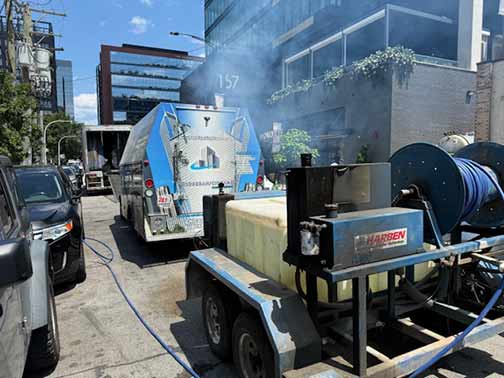
“Problems in the drainage system of your business building can hurt your business performance,” warns Key Home Sales company. Although these problems may not be directly linked to the core activities of your business, they still play a role in your success.
That is true because customers often judge your business based on its efficiency and the toilet’s physical condition. Visitors are less likely to return if they have an unpleasant experience in the toilets.
Clogged toilets and failing drain lines also make employees’ lives more difficult. The plumbing problems they encounter can sour people’s minds, having negative impacts on their interactions and overall performance.
What are the common drain problems in commercial buildings?
How do you stop these problems from happening in your commercial building’s drain lines? The truth is, there is no way to end most of these issues. However, you can employ interventions to preempt them or mitigate their effects.
Cost-effective drain-cleaning methods for your businesses
The most economically wise strategy for dealing with issues in commercial drain systems is to have them cleaned regularly. Regular drain cleaning prevents most drain problems because it eliminates the processes at the root of those drainage issues.
The best drain-cleaning methods for your business in terms of affordability, speed of execution, level of disruptiveness to day-to-day business operations, and risk of damage posed to the drainpipes are sewer rodding and hydro jetting.
This drain-cleaning method uses a series of approximately three-foot-long pipes connected end-to-end (to make them longer) and inserted into the blocked drain to unclog it. The line usually has a mechanical stainless steel cutting head at its tip.
At the other end is a machine that rotates the cutting head at high speeds to give it enough power to cut through any kind of blockage, including tree roots. Sewer rodding can be used for drain lines of all sizes because the cutting head can be switched out to fit the size of the pipes.
Hydro jetting is similar to sewer rodding in that it also uses a flexible hose. But that is where the similarities end. The line used in hydro jetting carries a stainless steel high-pressure nozzle at its tip, while the other end is connected to a water tank and a pressurizing machine.
Once inside the line, high-pressure water is shot into the pipe to blast away any debris and blockage inside the pipe. The water pressure can be adjusted to the pipe and the type of clog inside the pipe. Hydro jetting doesn’t just dislodge buildup it will also wash the pipes clean.
Sewer camera/ video inspection is not a drain cleaning method but a preliminary step before sewer rodding or hydro jetting. A sewer camera inspection is done using a specialized camera that is inserted into the blocked drain line to inspect it from up close.
As it travels through the drain line, the camera transmits a live feed of the inside of the pipe to a surface monitor viewed by the technician or plumber. Sewer camera inspections are an essential diagnostic tool for solving commercial drain issues.
The most effective drain-cleaning strategy for commercial drains
The cost of drain issues in a commercial building is higher than when those problems happen in a home. That is because, in addition to the impact on the plumbing and physical structures of the building, the business may have to pay a cost in the form of lost time and opportunities.
A preventive approach to solving drainage problems in a commercial building is the best option. That entails preventive steps instead of waiting to take action after they have already happened. How does this preventive strategy work?
Inspecting the drainpipes on a schedule, using a combination of sewer camera inspection and other methods, helps you catch problems early.
The building’s drainage system should be professionally cleaned at least once a year, whether blocked or not. It prevents clogs and other issues.
Finally, when putting together a drain-cleaning strategy for your commercial building, it is essential that you work with a professional plumber with experience in commercial plumbing systems. The experience of such a plumber will be a vital asset that can save you a lot of money.

